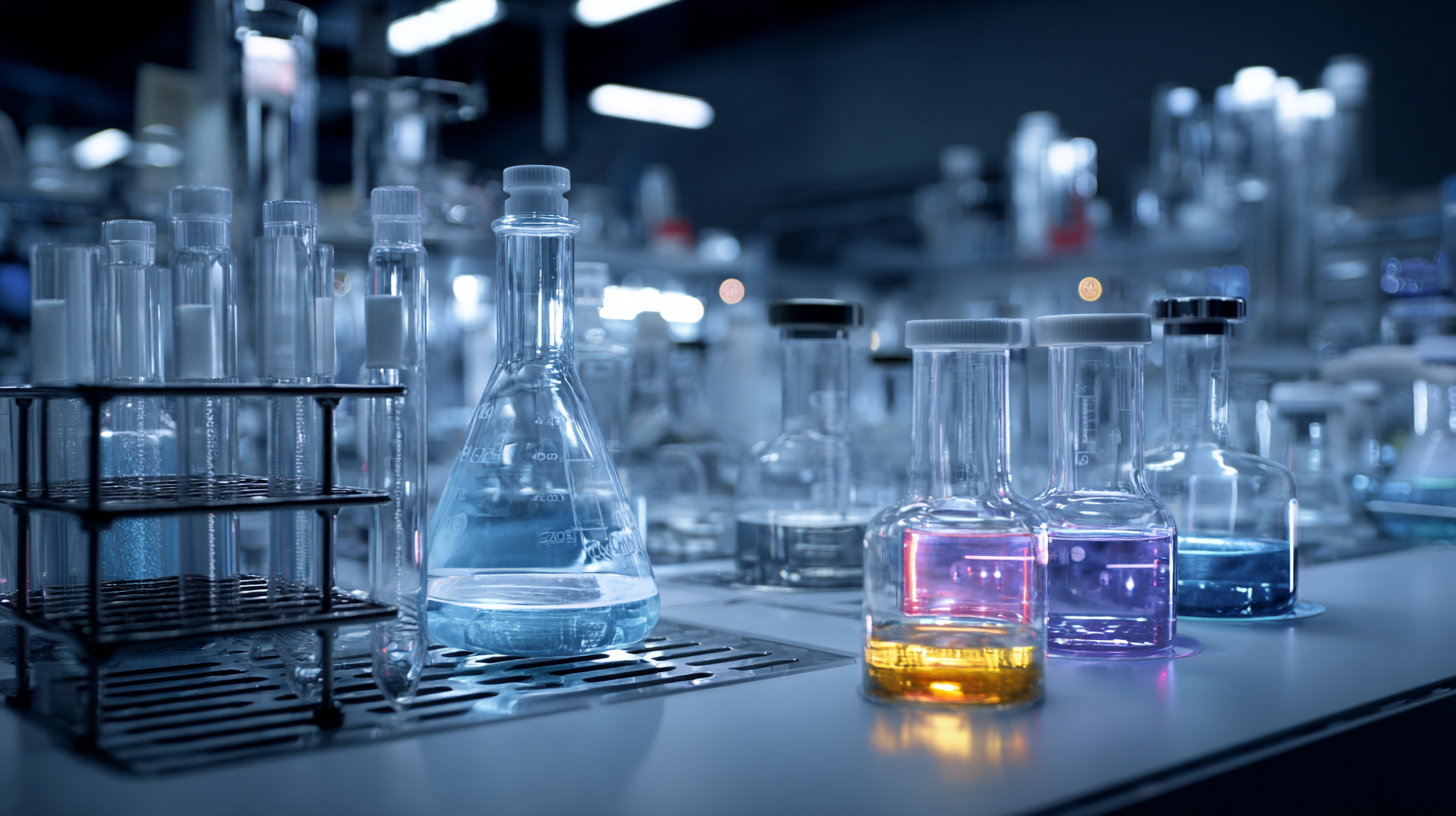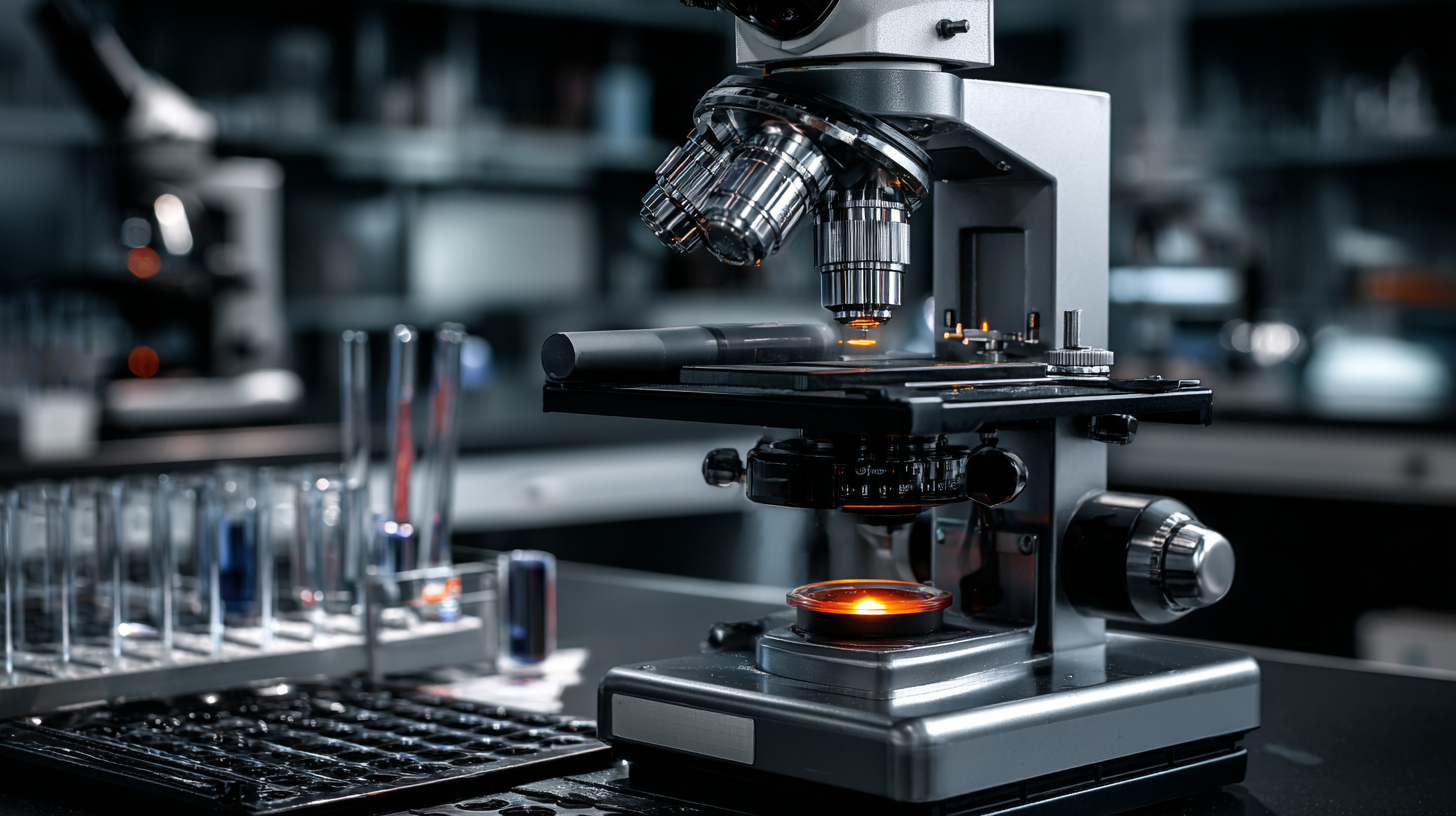

Exploring Innovative Alternatives in the Best Scientific Lab Equipment Market
In the rapidly evolving landscape of scientific research, the demand for high-quality Scientific Lab Equipment is more critical than ever. According to a recent market report by Market Research Future, the global laboratory equipment market is projected to reach approximately $60 billion by 2025, growing at a CAGR of 6-7%. This significant growth underscores the importance of selecting reliable suppliers who can provide innovative and efficient lab solutions. As researchers strive to enhance their experimental outcomes and operational efficiency, navigating the supplier market for top-notch equipment has become a vital endeavor. This blog will explore key strategies for identifying superior suppliers while providing a comprehensive checklist to streamline the decision-making process, ensuring that laboratories are equipped with the best Scientific Lab Equipment available.

The Impact of Trade Regulations on Lab Equipment Quality Assurance
Trade regulations play a crucial role in shaping the landscape of the scientific lab equipment market, directly influencing the quality assurance processes that manufacturers must adhere to. As countries implement stringent trade policies to protect domestic industries, the focus often shifts to ensuring that imported lab equipment meets specific safety and quality standards. These regulations not only foster a competitive environment but also encourage manufacturers to innovate in order to meet the evolving requirements while maintaining high levels of performance and reliability.
The impact of these trade regulations extends beyond mere compliance; they drive the development of innovative alternatives within the market. Manufacturers are increasingly exploring new materials and technologies that not only comply with regulatory standards but also enhance functionality and durability. This proactive approach not only improves the overall quality of lab equipment but also reduces the environmental footprint associated with production and disposal. As the market continues to adapt to these regulations, lab professionals can expect a wider array of high-quality, innovative products that align with both scientific advancements and regulatory expectations.
Navigating Export Certification Processes for Scientific Instruments
Navigating the export certification process for scientific instruments can seem daunting, but understanding these requirements is essential for manufacturers aiming to reach global markets. Export certification plays a critical role in ensuring that scientific equipment meets safety, quality, and compliance standards in the destination country. Each nation has specific regulations and guidelines, and it’s imperative for companies to familiarize themselves with these before attempting to export their products.
In addition to standard compliance checks, manufacturers must also tackle various documentation requirements, which may include certificates of conformity, product specifications, and technical documentation. Engaging with export consultants or certification bodies can streamline this process, as they can provide insight into labeling requirements and offer assistance in fulfilling necessary legal obligations. As innovation fuels the scientific lab equipment market, attention to export certification is not just a regulatory hurdle—it’s a pathway to expanding market reach and ensuring the reliability of groundbreaking instruments worldwide.
Emerging Trends in Eco-Friendly Lab Equipment and Compliance Standards
The demand for eco-friendly lab equipment has skyrocketed as laboratories increasingly prioritize sustainability alongside scientific innovation. Emerging trends highlight the shift towards materials and technologies that minimize environmental impact while maintaining high performance standards. For instance, many manufacturers are now developing lab instruments from recycled or biodegradable materials, ensuring that their production processes are less resource-intensive. Additionally, energy-efficient designs are being paired with smart technologies to optimize resource usage during experiments, thus creating a more sustainable laboratory environment.

Compliance standards play a crucial role in this transformation. Regulatory bodies are beginning to seek more stringent guidelines concerning the environmental impact of lab equipment. As a result, companies are striving to not only meet these evolving regulations but to exceed them, providing researchers with assurance that their equipment is compliant with both safety and ecological standards. This commitment to sustainability not only enhances the credibility of laboratory practices but also promotes a culture of responsibility within the scientific community, paving the way for future innovations that respect both science and the planet.
The Role of International Standards in Facilitating Laboratory Equipment Trade
International standards play a pivotal role in the laboratory equipment market, facilitating global trade and ensuring the quality and safety of scientific instruments. According to a recent report by MarketsandMarkets, the global laboratory equipment market is projected to reach $45.6 billion by 2025, with a compound annual growth rate (CAGR) of 6.2%. This demand emphasizes the need for standardized equipment that meets international specifications, thus supporting seamless trade across borders. Standards like ISO 9001 and ISO 13485 are essential for manufacturers, ensuring their products are reliable and compliant with global requirements.
Moreover, adherence to international standards not only supports product quality but also enhances consumer confidence. A study from the International Organization for Standardization (ISO) indicates that 75% of companies see improved market access and competitiveness through standardization. As laboratories worldwide increasingly seek innovative alternatives in their equipment, the importance of adhering to these standards cannot be overstated. Compliance with these regulations helps reduce discrepancies in product performance, ultimately leading to a more efficient and trustworthy laboratory environment. As the market evolves, nations that prioritize international standards will be better positioned to capitalize on emerging opportunities in the laboratory equipment sector.
Exploring Innovative Alternatives in the Best Scientific Lab Equipment Market - The Role of International Standards in Facilitating Laboratory Equipment Trade
| Equipment Type | Innovative Alternative | International Standard | Market Demand (2023) | Expected Growth Rate (2024-2026) |
|---|---|---|---|---|
| Microscope | Digital Microscope | ISO 15189 | $500 million | 8% |
| Centrifuge | High-Performance Centrifuge | IEC 61010 | $300 million | 5% |
| Refrigerator | Low-Temperature Freezer | ASTM D1776 | $450 million | 6% |
| Spectrophotometer | Portable Spectrophotometer | ISO 11843 | $350 million | 7% |
| Pipette | Electronic Pipette | ISO 8655 | $200 million | 10% |
Evaluating the Influence of Certification on Market Growth and Innovation
In recent years, the role of certification in driving market growth and fostering innovation in scientific lab equipment has gained significant attention. The global ISO certification market, projected to reach a staggering $18.59 billion by 2025, is expected to surge to $57.48 billion by 2033, with a compound annual growth rate (CAGR) of 15.2%. This robust growth reflects the increasing demand for high-quality standards in scientific research and laboratory operations, emphasizing the importance of certified equipment in ensuring accuracy and reliability.

Moreover, as innovations in lab technologies proliferate, the necessity for stringent testing and quality assurance becomes paramount. The medical device testing market alone is expected to see substantial growth, driven by the need for compliance with regulatory standards. From testing and inspection to certification, the various services within this market illustrate how critical these processes are for advancing medical technology while ensuring patient safety. By prioritizing certification, manufacturers and researchers can not only enhance their credibility but also actively contribute to a more innovative and efficient scientific ecosystem.





